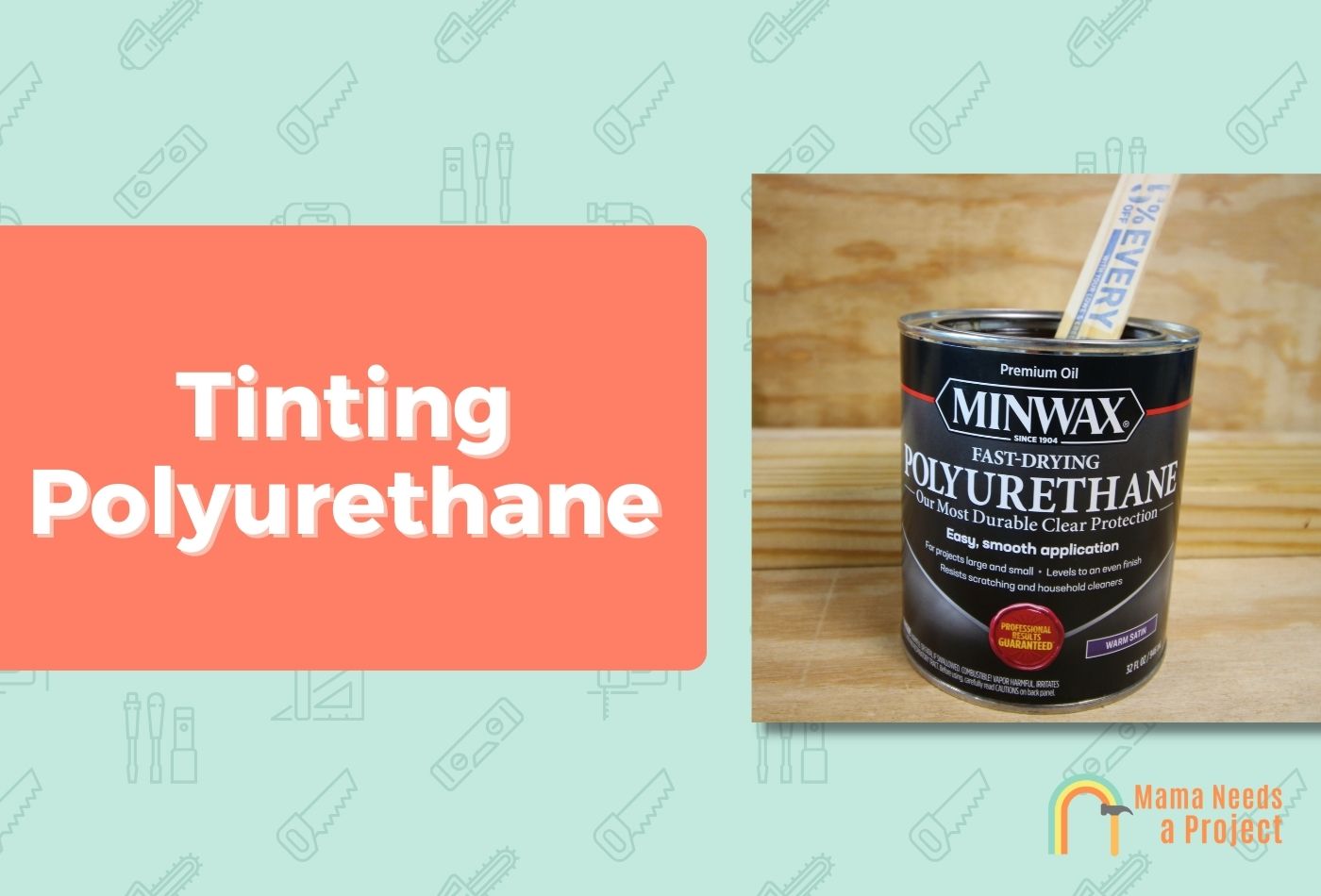Can You Tint Polyurethane? (Tips & Tricks!)
Polyurethane is one of the most popular finishes used by woodworkers. It’s often used to improve the appearance of wood and protect it from damage caused by UV rays and just normal wear and tear.
Adding a little color to polyurethane is a great way to make your projects stand out. In this guide, I’ll explain the various methods used to tint polyurethane and offer you some nifty tips on how to tint polyurethane for your next DIY project. Let’s dig in!
- You can make your own tinted polyurethane with a wide variety of coloring agents, including dyes, stains, and paints.
- Adding tint to polyurethane helps protect the wood and enhances its appearance.
- Oil and water don’t mix, so always use water-based paint with water-based polyurethane and oil-based paint with oil-based poly.
Can You Tint Polyurethane?
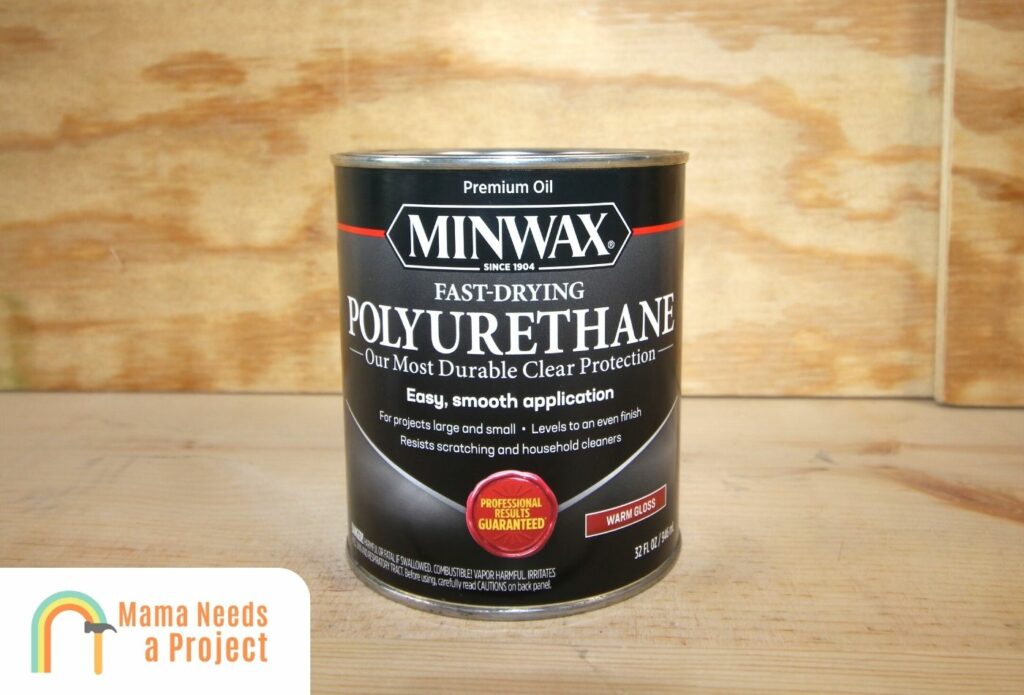
Can polyurethane be tinted? Yes, it can!
You can tint polyurethane with many types of coloring agents to achieve different shades, which is really handy if you’re trying to replicate a shade or you want to customize your own color.
Whether you’re using oil-based polyurethane or water-based polyurethane, you can add color to your projects to change the appearance without completely hiding the wood grain. You can use everything from wood stains to food coloring to tint polyurethane and achieve amazing results.
How to Tint Polyurethane: A Step-by-Step Guide
No matter what type of coloring agent you use for tinted polyurethane, you’re going to follow the same steps. Tinted polyurethane isn’t hard to make, but you need to take your time and pay attention when you’re creating a formula.
So, gather the tools and supplies you need, and follow along with this step-by-step guide to tinting polyurethane.
1. Gather Tools and Materials
First, gather the tools and materials you’ll need for your project. Tinting polyurethane can get a little messy, so be sure to wear gloves and spread newspaper or drop cloth out so it’s easy to clean up spills.
Tools:
- Mixing containers
- Disposable measuring cup
- Wooden stir stick
- Eye dropper
- Paint brushes
- Wire brushes
- Sandpaper
Materials
- Polyurethane
- Tint, dye, or paint to use as a coloring agent
- Scrap wood for testing
Some polyurethane tint kits come with most of the things you need for your project.
2. Stir the Polyurethane
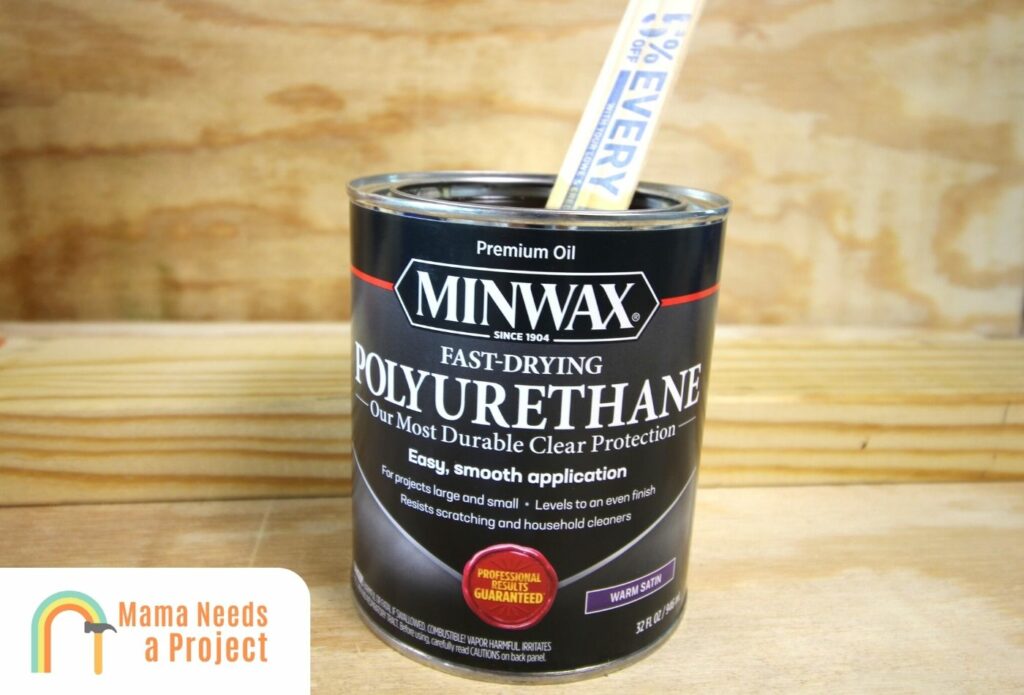
Start by pouring the polyurethane into the mixing container and stir it thoroughly. Don’t stir too vigorously because you can trap air bubbles in the mixture, and they might not come out even after it’s brushed on the wood.
Stir the polyurethane gently for about five minutes until it’s smooth and well-mixed.
3. Test Batch
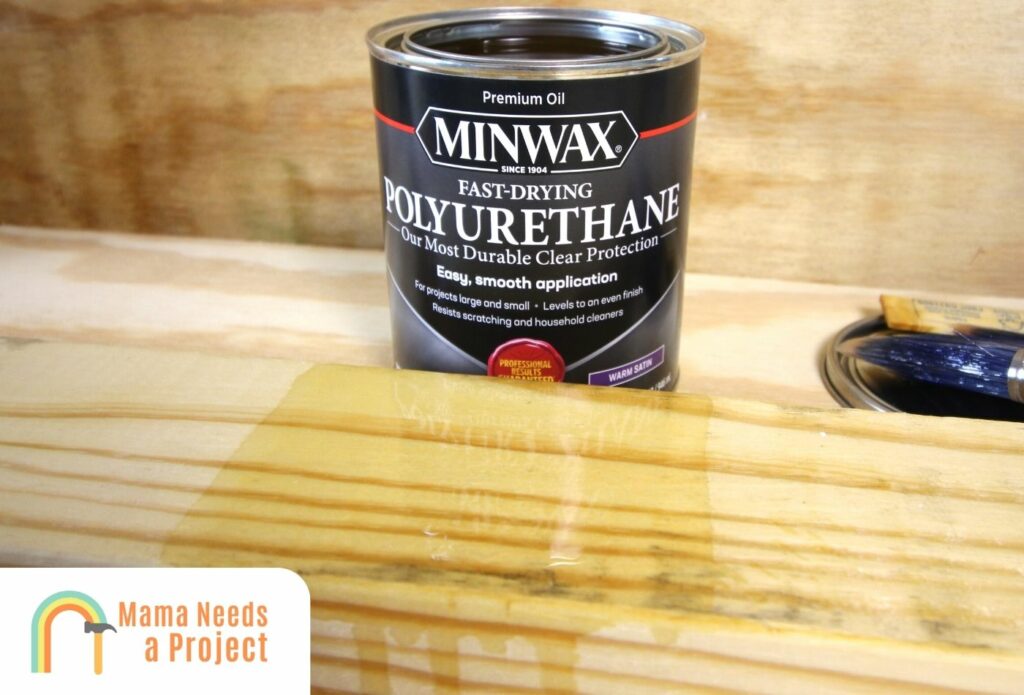
It’s best to start with a test batch so you can try the color on some scrap wood and make sure you like the way it looks.
To make a test batch, I recommend using a disposable measuring cup and put about a cup of polyurethane in a separate mixing container.
4. Add Pigment
Add pigment to the test container, starting with a small amount and testing the color before you add more.
If you’re using liquid dye, use an eye dropper to add color one dropper at a time. Stir gently with a stir stick, and then use a brush to apply the tinted polyurethane to a piece of scrap wood.
Whether you’re using paint, dye, or powdered pigments, you want to measure how much you add so you can keep track of your formula. For the best results, I always write down the formula as I work!
Every time you add more pigment, stir until the mixture is a consistent color, then test it on a scrap piece of wood.
5. Check the Color
To test the color, you may need to add multiple coats of your tinted polyurethane finish. Allow each coat to dry before you add the next one.
You can make your polyurethane finish lighter by adding more polyurethane to the mixture. If you think it needs to be darker, you can reduce the polyurethane-to-pigment ratio.
If you want a dark polyurethane finish, add dark pigments and use multiple coats.
6. Start Tinting
Once you have a formula and you’ve tested it, you can make a larger quantity to complete your project. Simply use your formula and increase it by multiplying the polyurethane and pigment by an equal amount.
Tinted polyurethane can be used just like clear polyurethane. Apply it with a synthetic bristle brush or foam roller in even coats, allowing each coat to completely dry before adding another. When painting it with a brush, apply the polyurethane in one direction to avoid bubbling.
Tinting Polyurethane: Water-Based vs. Oil-Based
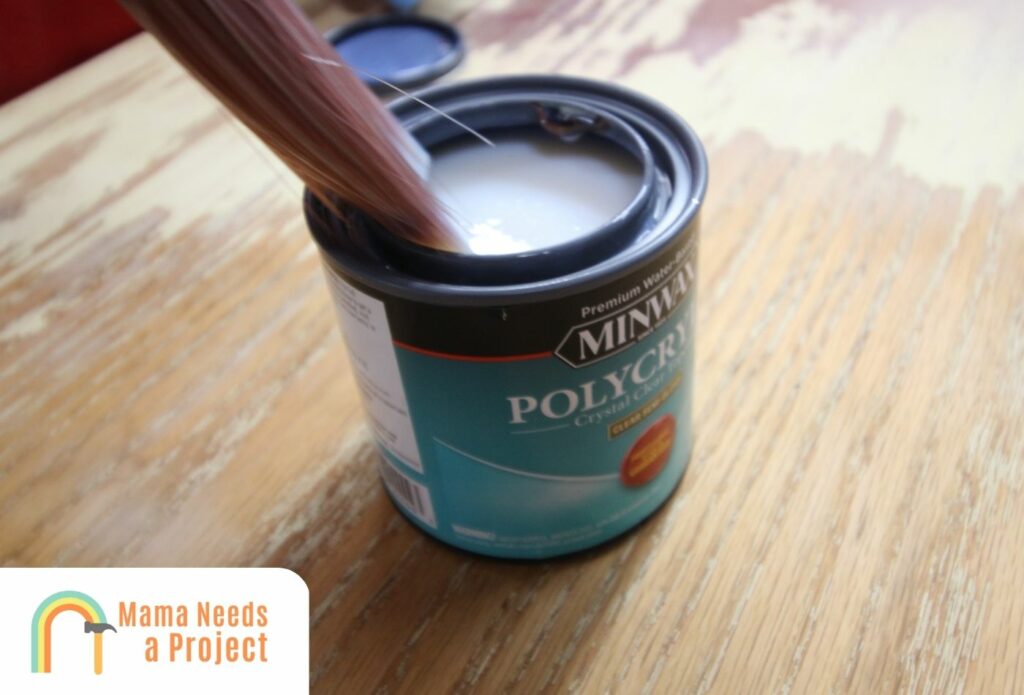
Water-based polyurethane and oil-based polyurethane are similar, but they have some distinct differences. Both types of polyurethane can be tinted with dyes and after tinting, they will maintain their unique characteristics.
Both types of polyurethane can be tinted with paint, but oil and water don’t mix, so it’s best to tint water-based polyurethane with latex paints and oil-based polyurethane with oil-based paint.
Pros and Cons of Water-Based Polyurethane
Water-based polyurethane is much easier to work with than oil-based polyurethane. It’s easier to clean up, and you don’t need to worry as much about toxic fumes. It’s still a good idea to work in a well-ventilated area, no matter what type of paint or wood coating you’re using.
Water-borne polyurethane starts out milky white in the container but goes on clear. It dries clear, too, and unlike oil-based polyurethane, it won’t turn yellow. Another advantage is that you can apply water-based polyurethane over existing oil-based finishes.
You’ll need to apply multiple coats of water-based polyurethane to get a thick enough coat, so you should take that into consideration when you’re tinting because more coats can result in a darker finish. Water-based polyurethane dries faster than oil-based, and you only have to wait 2 to 3 hours between coats.
On the downside, water-based polyurethane isn’t as durable as oil-based polyurethane. Some inferior types of water-borne polyurethane only last a few years, so you should choose a high-quality polyurethane like Minwax Water Based Oil-Modified Polyurethane Wood Finish for a protective coating that will last about ten years.
One of the biggest disadvantages of water-based polyurethane is that it scratches more easily than oil-based polyurethane, which can make it look worn over time.
Pros and Cons of Oil-Based Polyurethane
Oil-based polyurethane can be brushed or sprayed on and provides a warm, rich amber hue to wood projects. It is generally considered more durable than water-based formulas, making it a top choice for projects like floors and countertops, where durability is an issue.
Oil-based polyurethane dries slower than water-based polyurethane, and if you’re using multiple coats, you’ll need to allow plenty of curing time. However, since it’s thicker than water-based polyurethane, many projects don’t require more than one coat.
When applying oil-based poly, you need adequate ventilation. Wear a respirator to avoid problems caused by toxic fumes, which can be dangerous as well as offensive.
Tips on Tinting Polyurethane
Mixing Polyurethane with Paint
In most cases, it’s considered best practice to apply paints and then apply polyurethane after you’ve painted. But there may be times when you want to add paint to polyurethane to achieve just the right finish.
One reason to add a little paint to oil-based polyurethane is to avoid the yellowing effect that polyurethane has on wood. Sometimes, the amber color of oil poly looks good, but if you want a different hue, adding oil-based paint can help you find the right color.
When mixing paint and polyurethane, it’s important to stick with water-based paint for water-based polyurethane and oil-based paint with oil-based polyurethane. Add small amounts of paint to the polyurethane and mix completely each time you add more pigment. Test the color on scrap wood each time you add more paint.
You can also mix wood stain with polyurethane using the same technique. Just remember that oil and water don’t mix, and stick to oil-based stains for oil polyurethane.
Adding Food Color to Polyurethane
Many people want to know if you can use food color to tint polyurethane. Food color can be used with both types of polyurethane to achieve clear colors with poly finishes.
The key to using food coloring in tinting polyurethane is to mix the formula thoroughly. It may take longer to mix it, and it will look spotty unless it’s properly mixed.
In fact, many other common household products can be used to add color to polyurethane, including the following:
- Glitter
- Powdered dyes, like mica or clothing dye
- Kitchen spices
- Alcohol inks
- Aluminate dyes
Whenever you’re mixing pigments into polyurethane, start small and add a little bit at a time. Typically, color should never exceed 5% of the total volume, which is the same as 1 part color to 19 parts of polyurethane.
Using Polyurethane Tint Kits
There are a few different types of tint kits that you can get to achieve some exciting results to color your woodworking projects. Whether you’re repairing a piece of furniture or creating something new, adding color is a great way to bring life to your woodworking projects.
Mixol universal color pigments come in individual colors, or you can purchase a set of colors that you can use individually or mix together to get just the right color. These pigments can be used with almost any product, including polyurethane, epoxies, resins, wood fillers, and more.
- Mixol is compatible with almost any paint and coating
- High concentration of pigment
- Clean-up is very easy with soap and water
Another type of tint kit you can get is a wood dye kit. Wood dye kits are available in either liquid or powder form, and they are designed to be mixed with isopropyl alcohol or water and applied directly to wood. You can also mix them directly with polyurethane to create a one-of-a-kind finish.
- (5) 1oz Liquid Concentrated Dye Colors Kit | (5) Alcohol Dye Based Colors Kit
- Keda Alcohol Dye Kit Makes 2.5 Gallons Dye Stain When Mixed With Lacquer Thinner or Denatured Alcohol
- Powerful & Vibrant Dye – Keda Liquid Dyes Are Of Superior Quality That People Have Come To Expect From Our…
Here’s a great guide on finishing wood for your projects!
Final Thoughts
Tinting polyurethane is easier than you think!
You can use tinted polyurethane to refinish old wood or give new projects a custom color that will last for years.
There are a lot of ways to add color to polyurethane finishes to get just the right tint for your woodworking project. Tinted polyurethane is a great way to protect and seal wood, and it’s a good method for adding subtle color without affecting the integrity of the finish.


